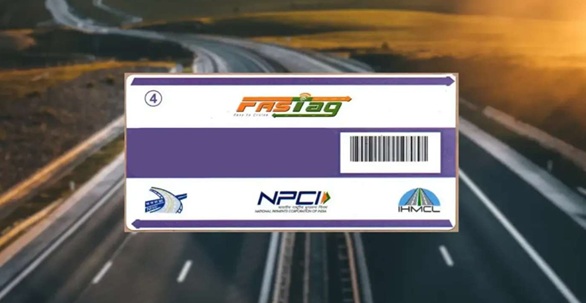Why in the News ?
The National Highways Authority of India (NHAI) has simplified the “Know Your Vehicle – KYV” process for FASTag users.

Key Points:
- This step has been taken to bring transparency and ease to the toll payment system, as well as to ensure user convenience.
- Previously, the KYV process was considered overly complex and time-consuming, causing inconvenience to millions of vehicle owners.
Purpose of the FASTag and KYV System
- The FASTag system is a modern technology for electronic toll collection, based on Radio Frequency Identification (RFID).
- The KYV (Know Your Vehicle) system was implemented in late 2023 to ensure that each FASTag is used only on the vehicle for which it was issued.
- This move was necessitated because some vehicle owners, especially commercial truck drivers, were reportedly using car tags to avoid higher tolls.
Problem: Complexities of the previous KYV process
The previous process required users to:
- Upload both front and side photographs of the vehicle,
- A scanned copy of the RC,
- Enter numerous details, including the vehicle's chassis number.
This process faced several technical difficulties:
- Websites were not user-friendly,
- Upload errors were common,
- And, most importantly, users who did not complete the KYV verification had their FASTags suddenly deactivated (frozen), causing significant inconvenience at toll plazas.
Key changes made in 2025 (NHAI Revised KYV Guidelines, 2025)
|
Earlier Rules
|
Revised Rules (2025)
|
|
Users had to upload front and side images of the vehicle.
|
Now, only the front image showing the number plate and FASTag is required.
|
|
RC (Registration Certificate) details had to be entered manually.
|
Now, the details will be automatically fetched from the government’s vehicle database.
|
|
FASTags used to get frozen if KYV (Know Your Vehicle) was not completed.
|
Now, services will not be suspended; instead, users will receive reminders and opportunities to complete KYV.
|
|
Confusion arose when multiple vehicles were linked to the same mobile number.
|
Now, users can select the relevant vehicle linked to their account.
|
|
Issued tags used to become inactive automatically.
|
Now, tags will remain active unless there is a complaint of misuse or the tag becomes loose/detached.
|
User Support and Grievance Redressal
- FASTag users can lodge a complaint on the National Highway Helpline – 1033.
- If there is difficulty uploading documents, it will be the responsibility of the issuing bank to contact the customer and provide assistance.
- Banks will now send periodic SMS reminders to users to help them complete the KYV process on time.
Integration of KYV and One Vehicle - One Tag Policy
- NHAI also clarified that the KYV process has been integrated with the OVOT policy, which has been made mandatory from October 31, 2024.
|
One Vehicle, One FASTag
- Launched by the National Highways Authority of India (NHAI)
- Objectives
- Prohibit the use of a single FASTag for multiple vehicles
- Prohibit linking multiple FASTags to a single vehicle
|
Overall Impact of the Policy
-
- User Convenience : The process has become easier and mobile-friendly, saving both time and effort for ordinary citizens.
- Transparency and Misuse Control: The revised process will prevent misuse of FASTags and ensure legitimate use.
- Promoting Digital Governance: Automated database integration is a step in line with the “Digital India” mission.
- Preparation of the MLFF system: This simplification is a step towards implementing multi-lane free flow tolling—a non-stop, fully automated toll system.
Key Features of FASTag
-
- Electronic toll collection system based on RFID technology.
- Operated by: National Highways Authority of India (NHAI).
- Toll amount is deducted directly from bank account or wallet.
- Launch: April 2016
- Mandatory: FASTag required in all new cars from December 1, 2017.
- Validity period: Up to 5 years.
Benefits of FASTag
-
- No need to stop the vehicle at toll plazas, which leads to:
- Time savings
- Reduction in traffic congestion
- Reduction in pollution
- The government maintains a digital record of every vehicle, making tracking easier.
Conclusion:
The simplification of the KYV process by NHAI is an important step towards strengthening the FASTag ecosystem. It will not only reduce user inconvenience but also accelerate India's progress towards "One Nation, One Tag" This improvement in the digital tolling system is an example of India moving towards a smart transport infrastructure.
|
Q. Which organization implemented the "Know Your Vehicle (KYV)" system ?
(a) Reserve Bank of India (RBI)
(b) National Highways Authority of India (NHAI)
(c) Ministry of Road Transport and Highways (MoRTH)
(d) Bureau of Indian Standards (BIS)
|


